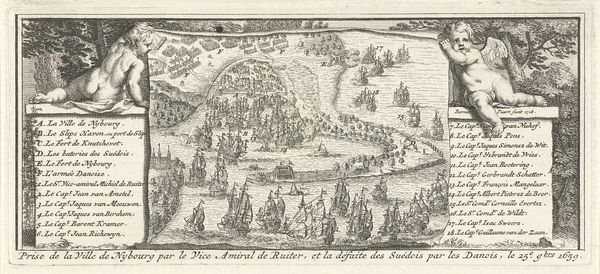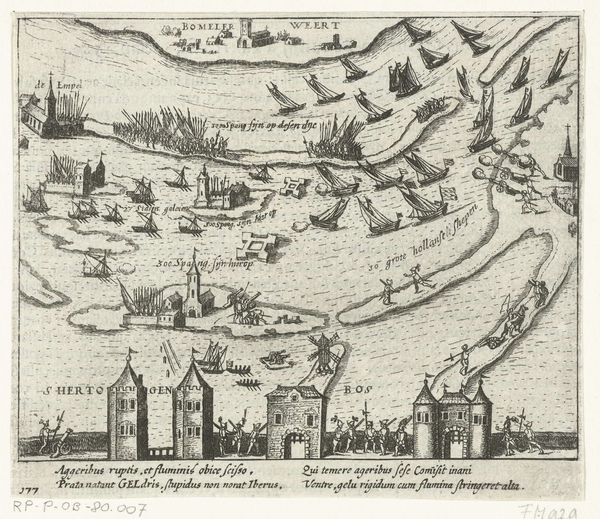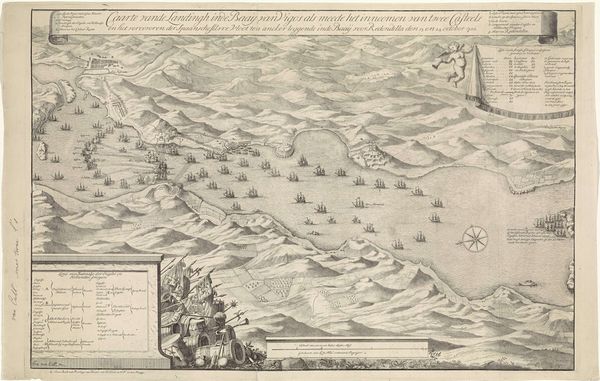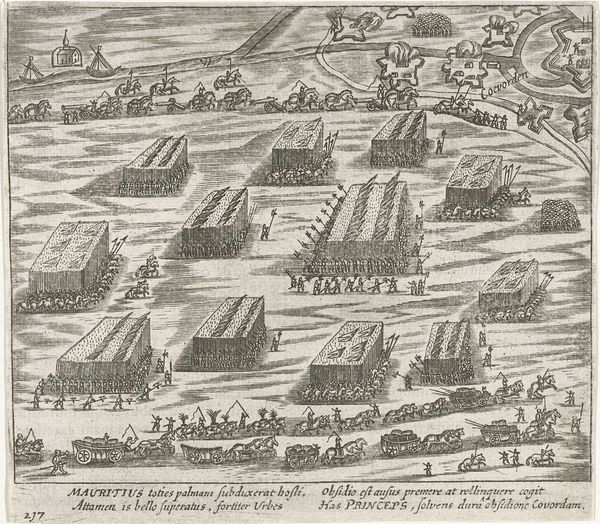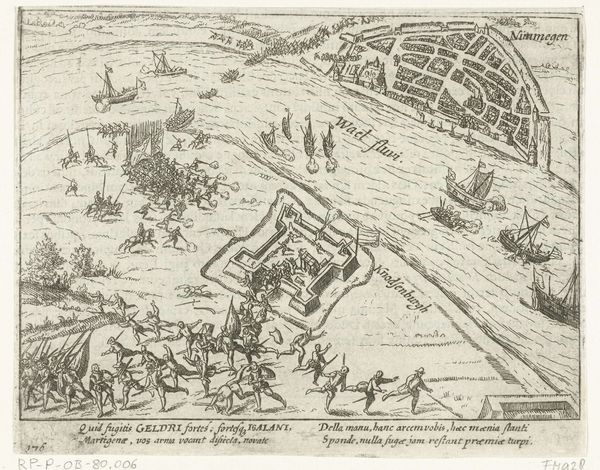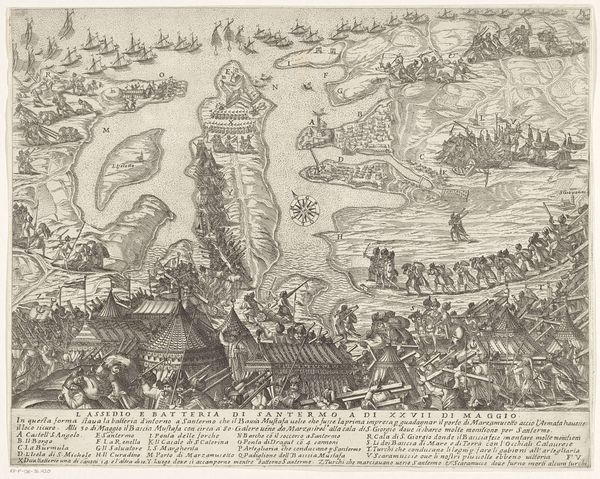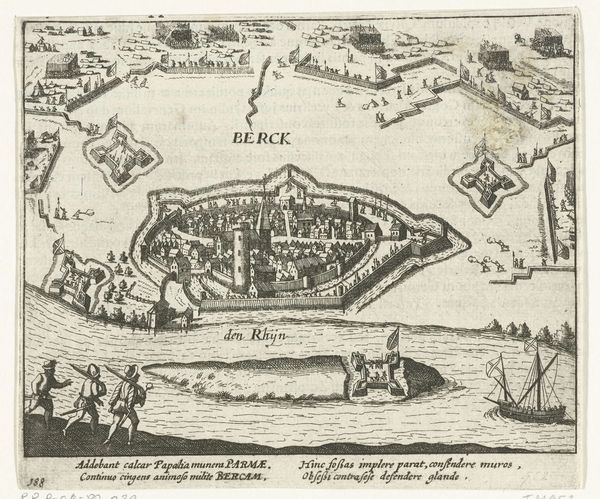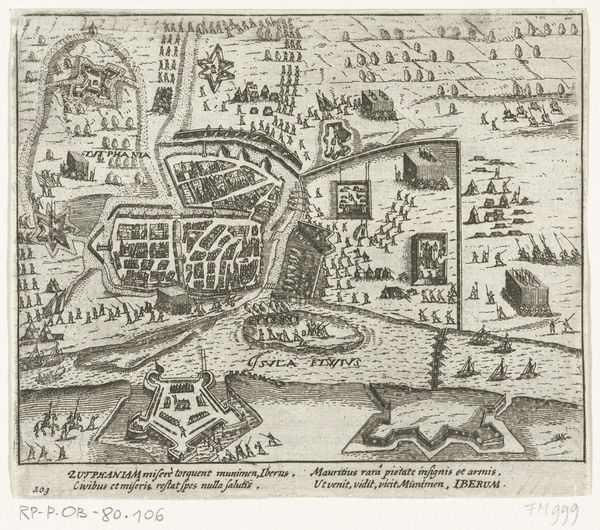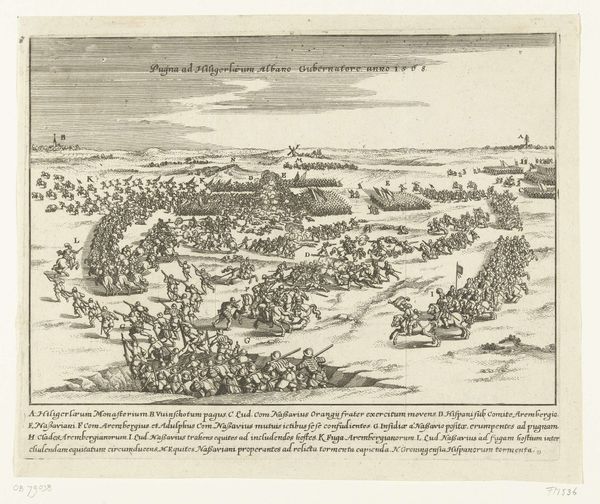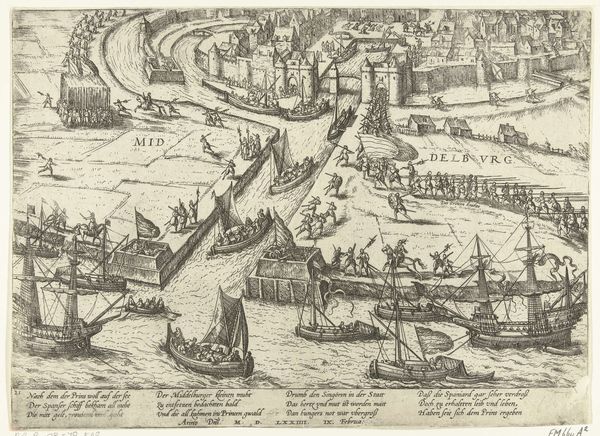
print, engraving
#
baroque
#
pen drawing
# print
#
landscape
#
history-painting
#
engraving
Dimensions: height 134 mm, width 157 mm
Copyright: Rijks Museum: Open Domain
Curator: Here we have an engraving from 1613-1615, titled “Slag bij Engelen, 1587,” attributed to an anonymous artist, depicting the Battle of Engelen. It’s part of the Rijksmuseum collection. Editor: My first impression is chaotic and frenetic. All those tiny figures engaged in battle—a churning mass of tiny, brutal gestures rendered in sharp lines. The black and white medium creates an urgent sense of immediacy. Curator: The engraving captures not just the immediate battle, but the overall strategic landscape of the siege. You have the city itself, 's-Hertogenbosch, indicated on the upper left, the location Engelen next to a fortress being attacked by ships, and different arrays of forces, possibly revealing an elaborate choreography of power at play during this historical conflict. The very lack of color invites the viewer to interpret symbols and historical referents based on shapes alone. Editor: Interesting that it’s an engraving. The labor involved in such a detailed rendering. The social conditions demanded a durable and replicable image to be circulated among different parties, to cement ideas, memories of heroism and possibly national identity. There's something very potent in its design and duplication of an image. Curator: Absolutely. The artist's choices tell a story in themselves. See how the composition uses linear perspective to convey depth and scale, which might not be immediately apparent given the flat, two-dimensional form. This offers a complex viewpoint which merges cartography with history painting and landscape art, inviting the viewer to understand it from different levels of meaning. The figures become cyphers of that tension. Editor: It speaks of a time when craft was intrinsic to the distribution of knowledge. It forces us to appreciate that artistic and communicative choices are based around making an object more consumable and, by extension, creating a longer lifespan for a particular idea. Curator: This artwork is a portal into a specific moment in time, but it also gives clues as to what matters culturally in creating meaning and remembering that historical event. Editor: I agree. The focus on both the artistry and dissemination process gives a great understanding of both this battle's context and its enduring legacy through art and print.
Comments
No comments
Be the first to comment and join the conversation on the ultimate creative platform.
